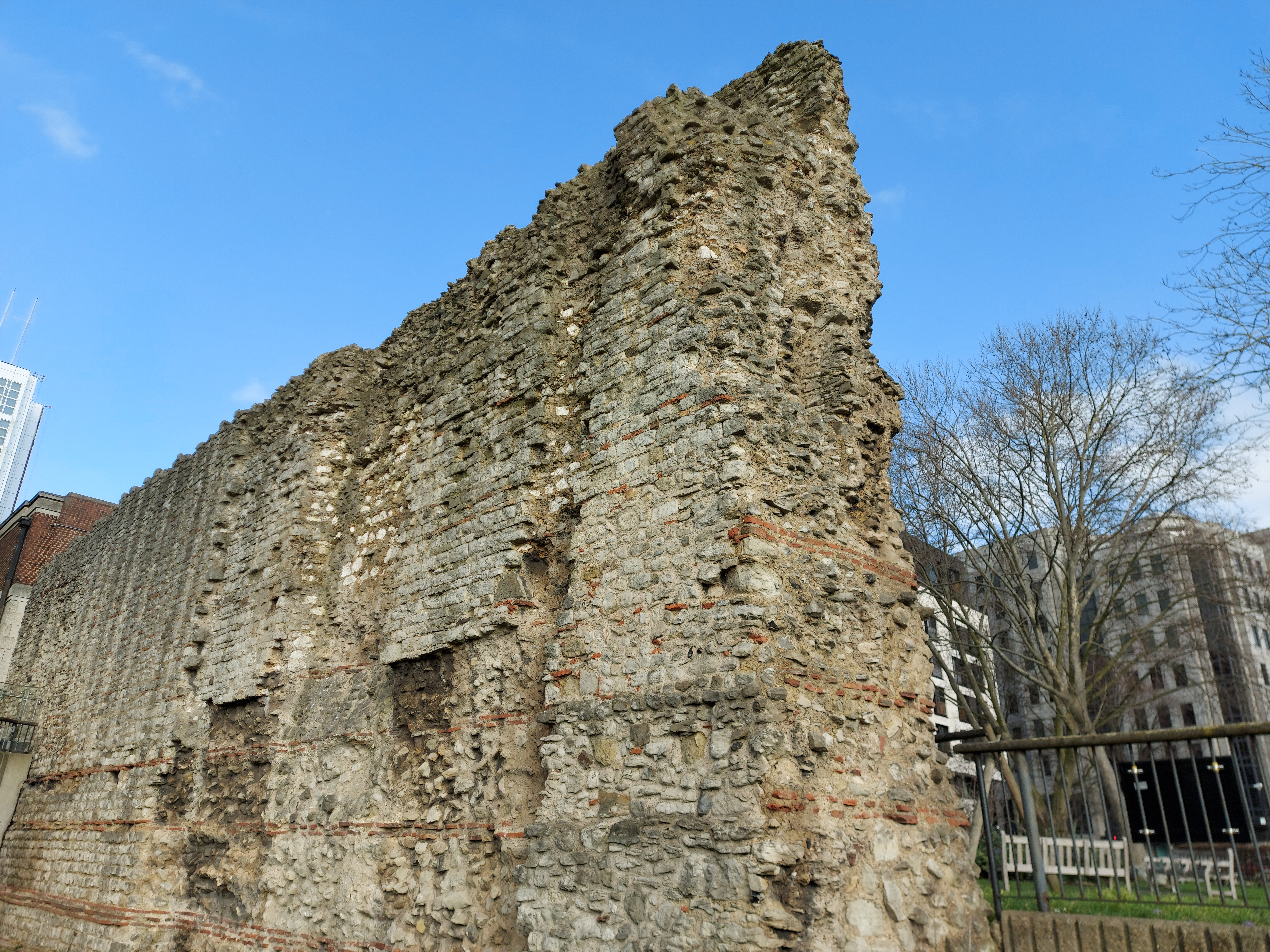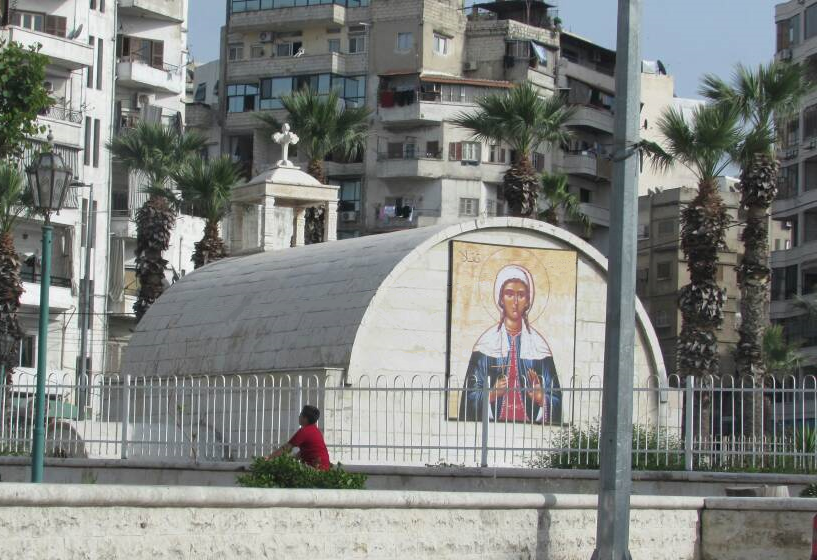|
Milan Cathedral
Milan Cathedral ( it, Duomo di Milano ; lmo, Domm de Milan ), or Metropolitan Cathedral-Basilica of the Nativity of Saint Mary ( it, Basilica cattedrale metropolitana di Santa Maria Nascente, links=no), is the cathedral church of Milan, Lombardy, Italy. Dedicated to the Nativity of St Mary (''Santa Maria Nascente''), it is the seat of the Archbishop of Milan, currently Archbishop Mario Delpini. The cathedral took nearly six centuries to complete: construction began in 1386, and the final details were completed in 1965. It is the largest church in the Italian Republic—the larger St. Peter's Basilica is in the State of Vatican City, a sovereign state—and possibly the second largest in Europe and the third largest in the world (its size and position remain a matter of debate). History Milan's layout, with streets either radiating from the Duomo or circling it, reveals that the Duomo occupies what was the most central site in Roman Mediolanum, that of the public b ... [...More Info...] [...Related Items...] OR: [Wikipedia] [Google] [Baidu] |
Roman Catholic Archdiocese Of Milan
The Archdiocese of Milan ( it, Arcidiocesi di Milano; la, Archidioecesis Mediolanensis) is a Latin Church ecclesiastical territory or archdiocese of the Catholic Church in Italy which covers the areas of Milan, Monza, Lecco and Varese. It has long maintained its own Latin liturgical rite usage, the Ambrosian rite, which is still used in the greater part of the diocesan territory. Among its past archbishops, the better known are Ambrose, Charles Borromeo, Pope Pius XI and Pope Paul VI. The Archdiocese of Milan is the metropolitan see of the ecclesiastical province of Milan, which includes the suffragan dioceses of Bergamo, Brescia, Como, Crema, Cremona, Lodi, Mantova, Pavia, and Vigevano."Archdiocese of Milano " '' |
Catholic Church
The Catholic Church, also known as the Roman Catholic Church, is the largest Christian church, with 1.3 billion baptized Catholics worldwide . It is among the world's oldest and largest international institutions, and has played a prominent role in the history and development of Western civilization. O'Collins, p. v (preface). The church consists of 24 ''sui iuris'' churches, including the Latin Church and 23 Eastern Catholic Churches, which comprise almost 3,500 dioceses and eparchies located around the world. The pope, who is the bishop of Rome, is the chief pastor of the church. The bishopric of Rome, known as the Holy See, is the central governing authority of the church. The administrative body of the Holy See, the Roman Curia, has its principal offices in Vatican City, a small enclave of the Italian city of Rome, of which the pope is head of state. The core beliefs of Catholicism are found in the Nicene Creed. The Catholic Church teaches that it is the ... [...More Info...] [...Related Items...] OR: [Wikipedia] [Google] [Baidu] |
State Of Vatican City
Vatican City (), officially the Vatican City State ( it, Stato della Città del Vaticano; la, Status Civitatis Vaticanae),—' * german: Vatikanstadt, cf. '—' (in Austria: ') * pl, Miasto Watykańskie, cf. '—' * pt, Cidade do Vaticano—' * es, Ciudad del Vaticano—' is an independent city-state, microstate and enclave within Rome, Italy. Also known as The Vatican, the state became independent from Italy in 1929 with the Lateran Treaty, and it is a distinct territory under "full ownership, exclusive dominion, and sovereign authority and jurisdiction" of the Holy See, itself a sovereign entity of international law, which maintains the city state's temporal, diplomatic, and spiritual independence. With an area of and a 2019 population of about 453, it is the smallest state in the world both by area and population. As governed by the Holy See, Vatican City State is an ecclesiastical or sacerdotal-monarchical state ruled by the Pope who is the bishop of Rome and he ... [...More Info...] [...Related Items...] OR: [Wikipedia] [Google] [Baidu] |
Council For British Archaeology
The Council for British Archaeology (CBA) is an educational charity established in 1944 in the UK. It works to involve people in archaeology and to promote the appreciation and care of the historic environment for the benefit of present and future generations. It achieves this by promoting research, conservation and education, and by widening access to archaeology through effective communication and participation. History and objectives The origins of the CBA lie in the Congress of Archaeological Societies, founded in 1898, but it was in 1943, with the tide of war turning, that archaeologists in Britain began to contemplate the magnitude of tasks and opportunities that would confront them at the end of hostilities. In London alone more than 50 acres of the City lay in ruins awaiting redevelopment, while the historic centres of Bristol, Canterbury, Exeter, Southampton, and many other towns had suffered devastation. In response to a resolution from the Oxford Meeting of the Society ... [...More Info...] [...Related Items...] OR: [Wikipedia] [Google] [Baidu] |
London
London is the capital and List of urban areas in the United Kingdom, largest city of England and the United Kingdom, with a population of just under 9 million. It stands on the River Thames in south-east England at the head of a estuary down to the North Sea, and has been a major settlement for two millennia. The City of London, its ancient core and financial centre, was founded by the Roman Empire, Romans as ''Londinium'' and retains its medieval boundaries.See also: Independent city#National capitals, Independent city § National capitals The City of Westminster, to the west of the City of London, has for centuries hosted the national Government of the United Kingdom, government and Parliament of the United Kingdom, parliament. Since the 19th century, the name "London" has also referred to the metropolis around this core, historically split between the Counties of England, counties of Middlesex, Essex, Surrey, Kent, and Hertfordshire, which largely comprises Greater London ... [...More Info...] [...Related Items...] OR: [Wikipedia] [Google] [Baidu] |
Tower Hill
Tower Hill is the area surrounding the Tower of London in the London Borough of Tower Hamlets. It is infamous for the public execution of high status prisoners from the late 14th to the mid 18th century. The execution site on the higher ground north-west of the Tower of London moat is now occupied by Trinity Square Gardens. Tower Hill rises from the north bank of the River Thames to reach a maximum height of 14.5 metres (48 ft) Ordnance Datum. The land was historically part of the Liberties of the Tower of London, an area the Tower authorities controlled to keep clear of any development which would reduce the defensibility of the Tower. Building has encroached to a degree, but a legacy of this control is that much of the hill is still open. The hill includes land on either side of the London Wall, a large remnant of which is visible. Definition Generally speaking, the name Tower Hill informally applies to those parts of the Tower Liberty that are outside the ... [...More Info...] [...Related Items...] OR: [Wikipedia] [Google] [Baidu] |
Saint Thecla
Thecla ( grc, Θέκλα, ) was a saint of the early Christian Church, and a reported follower of Paul the Apostle. The earliest record of her life comes from the ancient apocryphal ''Acts of Paul and Thecla''. Church tradition The ''Acts of Paul and Thecla'' is a 2nd-century text () which forms part of the ''Acts of Paul'', but was also circulated separately. According to the text, Thecla was a young noble virgin from Iconium who listened to Paul's "discourse on virginity", espoused his teachings and became estranged from both her fiancé, Thamyris, and her mother. Thecla sat by her window for three days, listening to Paul and his teachings. When her mother and fiancé witnessed this, they became concerned that Thecla would follow Paul's demand that "one must fear only one God and live in chastity", and turned to the authorities to punish both Paul and Thecla. Thecla was miraculously saved from burning at the stake by the onset of a storm and traveled with Paul to Antio ... [...More Info...] [...Related Items...] OR: [Wikipedia] [Google] [Baidu] |
Santa Tecla, Milan
Basilica di Santa Tecla was a former, paleo-Christian basilica church in Milan, region of Lombardy, Italy. It was originally established in 350 and demolished in 1458. Remnants of the structure have been excavated underneath the Milan Cathedral. According to a number of historians the construction of the Basilica was ordered by Roman Emperor Constans in 345 under the name ''Basilica Maior. ''It was then founded in 350.Fiorio, Maria Teresa. ''Le Chiese di Milano''. Milano, Mondadori Electa, 2006. See also * Early Christian churches in Milan References Tecla Tecla is a female given name. Notable people with the name include: * Tecla Insolia (born 2004), Italian actress and singer * Tecla Marinescu (born 1960), Romanian sprint canoer * Tecla Namachanja Wanjala (born 1962), Kenyan peace activist * Tec ... 345 establishments 4th-century churches 4th-century establishments in Italy {{Italy-church-stub ... [...More Info...] [...Related Items...] OR: [Wikipedia] [Google] [Baidu] |
Forum (Roman)
A forum (Latin ''forum'' "public place outdoors", plural ''fora''; English plural either ''fora'' or ''forums'') was a public square in a Roman municipium, or any civitas, reserved primarily for the vending of goods; i.e., a marketplace, along with the buildings used for shops and the stoas used for open stalls. Many fora were constructed at remote locations along a road by the magistrate responsible for the road, in which case the forum was the only settlement at the site and had its own name, such as Forum Popili or Forum Livi. The functions of a forum In addition to its standard function as a marketplace, a forum was a gathering place of great social significance, and often the scene of diverse activities, including political discussions and debates, rendezvous, meetings, et cetera. In that case, it supplemented the function of a ''conciliabulum''. Every ''municipium'' had a forum. Fora were the first of any civitas synoecized whether Latin, Italic, Etruscan, Greek, Ce ... [...More Info...] [...Related Items...] OR: [Wikipedia] [Google] [Baidu] |
Basilica
In Ancient Roman architecture, a basilica is a large public building with multiple functions, typically built alongside the town's Forum (Roman), forum. The basilica was in the Latin West equivalent to a stoa in the Greek East. The building gave its name to the architectural form of the basilica. Originally, a basilica was an ancient Roman architecture, ancient Roman public building, where courts were held, as well as serving other official and public functions. Basilicas are typically rectangular buildings with a central nave flanked by two or more longitudinal aisles, with the roof at two levels, being higher in the centre over the nave to admit a clerestory and lower over the side-aisles. An apse at one end, or less frequently at both ends or on the side, usually contained the raised Tribune (architecture), tribunal occupied by the Roman magistrates. The basilica was centrally located in every Roman town, usually adjacent to the forum and often opposite a temple in imperia ... [...More Info...] [...Related Items...] OR: [Wikipedia] [Google] [Baidu] |

.jpg)




